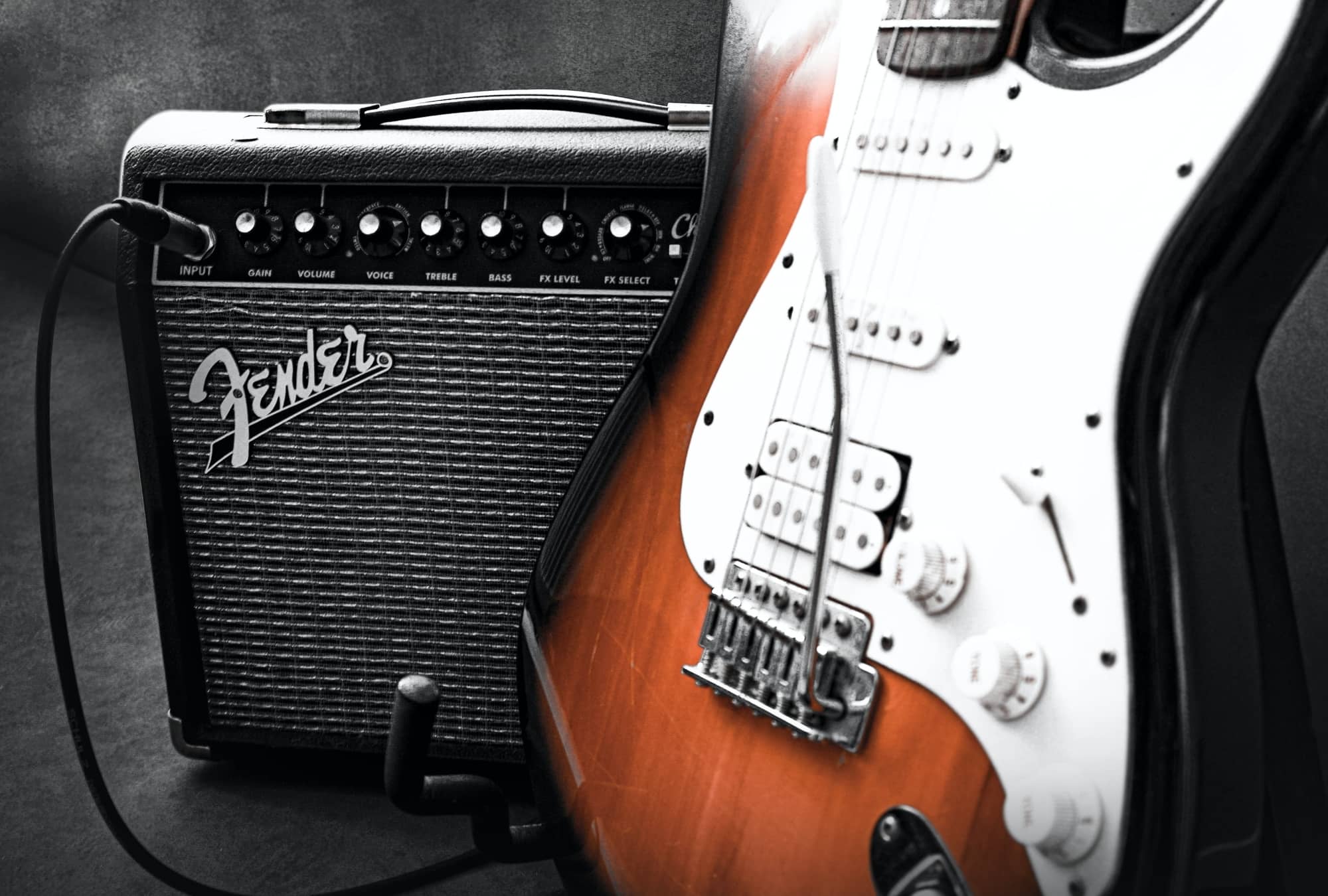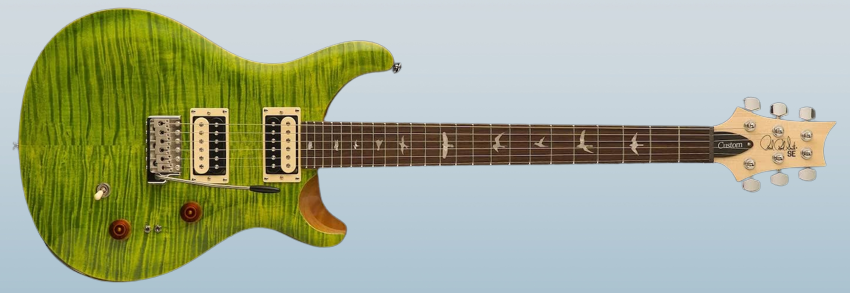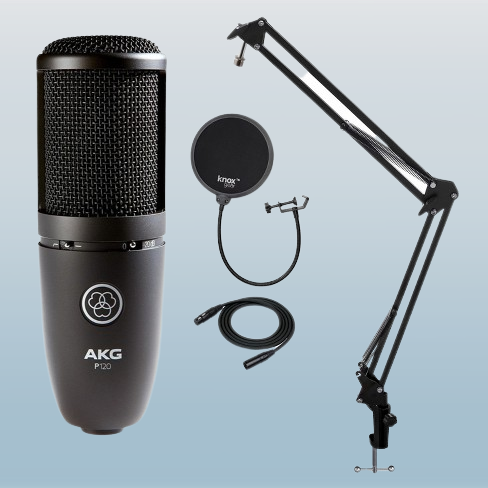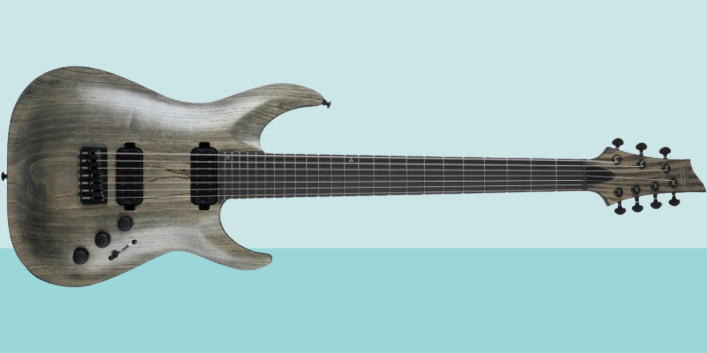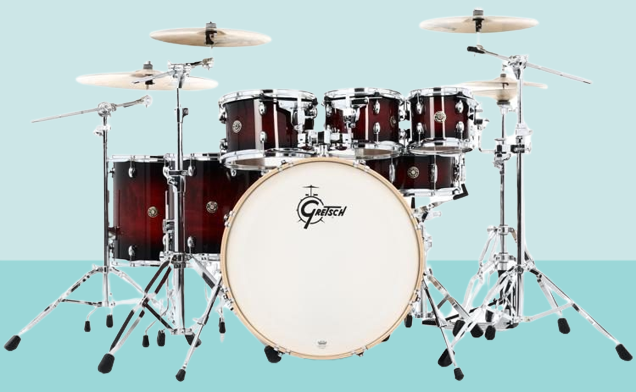Are you in the process of getting your first electric guitar to enjoy unlimited fun, music, and creativity? Plenty of electric guitars are available on the market, but the question here is how you choose the one that suits you.
Picking up the best electric guitar is overwhelming if you are unaware of what to look for. To pick the best guitar, you should learn about the wood types, body types, string styles, and hardware.
We packed the detailed information in this ultimate guide for purchasing your first guitar. Step-by-step information like how an electric guitar works, how it looks, how it sounds, and other relevant accessories. Before buying the guitar, just read this ultimate guide.
Choosing a Guitar Based on Your Style

Picking up a guitar that suits your style is not an easy task. Before making a decision, you need to analyze your requirement by answering a few questions. Such as the type of music you would like to play with it, the style of the guitar, its body style and shape, and finally, your budget for an electric guitar.
Shop Electric Guitar Styles on the Might Be Famous Site Here
When browsing different models consider the style of music you enjoy. Do you want to play rock, razz, solos, or leads on a rhythmic guitar or acoustic fingerpicking? Is playing or learning guitar just a hobby, or are you planning to passionately shape a career with it? If it is just for fun and playing around the house, go for a simple one instead of investing huge money. If you plan something great with it, you can think of getting an expensive model with the latest features that prove useful in the long run.
The best way to choose the guitar is to research well, list the top 10 models in your budget, and try them in the local stores to experience the sound, feels, look, and versatility.
Basics of Electric Guitar

The electric guitar consists of four elements- body, neck, electronics, and hardware.
Neck- It comes in various sizes and shapes, with different neck profiles. These profiles are generally denoted by C, D, U, and V.
Body- It houses the guitar electronics like pickups, knobs, switches, hardware packages, strings, strap buttons, nuts, tunning keys, and strings.
Electronics- Few guitars are designed with active pickups involving batteries as an energy source. To establish sound control, some active filters and equalization circuits are included. Guitars designed with active electronics will give good quality, higher output with great quality in sound.
Hardware- Guitars consist of a lot of hardware that serves different uses. The important hardware components are the tuning machines, tailpieces, and bridges. Proper use of hardware components will increase the guitar tuning stability and versatility.
Choosing a Body Shape
Three electric guitars are trending in the market: Solid-body, semi-hollow body, and hollow-body guitars.
Solid-body guitars- These are versatile and will not suffer any feedback issues. These are popular types of guitars and are available in many shapes.
- Fender Stratocaster shape or S- Type
- Fender Telecaster shape or T- Type
- Gibson Les Paul shape or LP-Type
- Gibson SG Shape or SG-Type
- Gibson Flying V Shape or V- Type
- Gibson Explorer shape or Explorer Type
- Offset Type
S-type and SG-type are known as Double Cutaway guitars and provide good access to the upper frets. T-type and LP-type are called Single Cutaway guitars, which are heavier to carry. Other types are difficult to play while sitting.
Semi-hollow and hollow-body guitars are lighter, suit cleaner tones, and are susceptible to feedback. Semi-hollow bodies are suited for genres like jazz, blues, and indie. Hollow shapes bodies are advantageous to solids in their resonant sound, acoustic. So these will suit best for some styles of music. You can easily identify a semi-hollow body and a hollow body with a solid body as they have one or two “f-holes” on the front part of the body.
Finally, you can choose any shape, and it’s completely your personal choice. But the selected guitar should match your purpose.
Musical Style
You can play any kind of music with any of these electric guitars. With the help of guitar pickup, you can choose certain styles of music. Single-coil pickups provide a thinner, more fluid tone and are frequently used on Stratocasters, Telecasters, or guitars with P-90s. They work nicely with fuzz pedals and provide clean chiming tones and overdriven tones reminiscent of the old era. Guitarists that enjoy high-gain tones sometimes turn to humbucker-equipped instruments, such as many Gibson Les Pauls, since they provide a little deeper and darker sound.
Be sure to read our Gibson vs Fender Guide Here for more details
Tonewoods
Wood also plays an important role in electric guitars by giving a guitar a nice feel, playability, and tone. Depending on the wood, the price of the guitar varies. Let us know the type of woods used in the manufacturing of guitars.
Mahogany- You all know that mahogany is commonly used in making furniture. It is stronger and used in body construction, not on the neck part or the fretboards. It is not the hardest wood but gives a mellow sound with some resonance.
Ash- It is a relatively hard wood and is used in the manufacturing of solid body models.
Alder- It is not hard as Ash but is used to manufacture solid electric guitars.
Agathis- It produces a brighter sound and plenty of resonance at an affordable price.
Maple- It is used in manufacturing different electric guitar parts, like fingerboards.
Rosewood- It is a heavy wood used to manufacture guitar fingerboards.
Basswood- It is the most affordable one and is widely used to manufacture guitars.
Guitar Strings
Let us understand the guitar strings. For an electric guitar, you get electrical strings, and for the classical guitar, the nylon strings. Two things change primarily with guitar strings. The first is the gauge and the second is the blend, but both these properties significantly affect the sound and durability of strings.
Gauge- If the gauge is heavier, the strings will produce more sound, while the lighter one produces a more crisp sound.
Blend- It defines or states what materials are used to manufacture strings and at what ratio they are used.
Pickups
While considering an electric guitar, another crucial point is the guitar’s tone, which is subjective and changes from one person to another, like the one which is good for me may not be good for you. It also depends on your requirement. Some may try tuning the hard one, which may be possible with few guitars. In that case, you need to consider the pickups, which help you understand how the guitar sounds.
There are three types of pickups: one is single coils, another one is humbuckers, and the final one is P90.
Single Coil
You will notice the single-coil pickups mostly on Stratocasters and Telecasters. These will give you the lowest output and the brightest one that suits all music styles. However, these pickups are highly susceptible to feedback while in distortion. These pickups are also used for country, pop, and rock music but are rarely used in heavy metal.
Humbucker
You will notice the humbucker coils on Les Pauls’s guitars. These will give you the highest, loudest, warmest, and fullest output that suits several music styles. Moreover, these are least susceptible to feedback while working on distorted amp settings. So it is good for metal and rock.
P90
It is similar to the single-coil pickups, but it technically sounds high with a wide bobbin. P90 is less susceptible to feedback when compared with the single-coil pickups but not as good as humbucker coils.
You can notice guitars with one, two, or three pickups in the market, which may be a single-coil, humbucker, P90s, or a combination of all three pickups. If you notice guitars with a combination of three pickups, it ultimately sounds good by providing the possible features.
Pickups also come with different technologies. One is active, and the other is passive pickups. Active pickups come with a battery and deliver higher output, whereas passive pickups do not contain a battery and deliver a very low output.
When operated under high gain amp settings, active pickups boost the volume, and the clarity of the output also increases. At the same time, the passive pickups sound muddier, even though they offer many features.
Bridge Types
The bridge affects the overall reliability of a guitar. Plenty of guitar bridges are available but are categorized into two types- Fixed and Floating bridges.
Fixed Bridges
As the name suggests, the strings will stay in a fixed position. Fixed bridges resulting in low maintenance and east string changing. The fixed nature will enable greater stability in tunes while performing string bends.
Floating Bridges
In floating bridges, the pitch of the string can be easily modified with the help of a whammy bar. Another adorable feature is the Floyd Rose which provides double-locking tremolos. Tremolo does lower the pitch by raising the pitch just by pulling the arm.
What Else Do You Need? (Amp, Picks, Straps, Tuner, Pedals)
Exploring all the electric guitar accessories is impossible, as technology changes our daily lives. Similarly, hundreds of new accessories come into the life of a guitarist, and it isn’t easy to know all of them in detail. But a few important things you need to know while buying your perfect guitar are updated here.
Amplifier
It is one of the important accessories that an electric guitar should have. Without this, you cannot hear the output of the guitar. Approximately 10-20 watts of power is sufficient for beginners.
Picks
Picks, also known as Plectrums, help give a strong and clear sound while playing the guitar.
Straps
The strap will help in enabling the perfect posture for your body while playing the guitar so that you can play guitar either in the standing or sitting position for long hours.
Tuner
It helps in providing the information on whether the guitar perfectly matches your tune. You can also check this by an online tuner, but it would be better if you get a tuner.
Pedals

To an electric guitar, pedals add immense beauty to the music by completely transforming the tone. The three main groups of guitar pedals are overdrive/distortion, modulation, and time-based effects.
Overdrive or distortion effects – These effects are used for crunchy and aggressive tones.
Modulation – These effects include chorus, flanger, and phaser.
Time-based effects – These include reverb and delay, which help create a sense of space.




